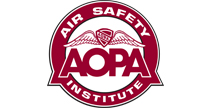In a fix
((ERA11FA504)
 By David Jack Kenny
By David Jack Kenny
Experienced owners know to approach an aircraft’s first flight after maintenance or repair with considerable caution. No matter how much you trust your mechanic (or yourself) or how thorough your preflight, there’s only one way to be certain that all those assorted parts are once again cooperating well enough to accomplish flight. That’s by giving them the chance to take to the air—remaining mindful that you don’t know everything’s in working order, and putting some thought into what you’ll do if it’s not.
So if a post-maintenance flight requires care because you don’t know whether things will actually work, what does that say about flying an aircraft you already know isn’t in proper running order?
Naturally, some discrepancies are a more obvious no-go than others. A broken nav light probably won’t get you killed even if your flight does stretch on after dark (enforcement action is another matter). Still, any mechanical deficiency that keeps the aircraft from being operated as designed deserves respect. An inoperative flap motor seems more like a nuisance than a problem until you have to make an emergency landing on a thousand feet of two-lane country road. Plenty of airplanes fly with fixed gear, so what’s the big deal if retractable gear won’t retract? Maybe nothing—unless it’s a twin that loses an engine and can’t maintain altitude due to the extra drag. And it would seem obvious that, single or twin, powerplant problems are best sorted out on the ground.
Early in the afternoon of Sept. 25, 2011, an experimental Velocity RG crashed into the woods just after taking off from Runway 3 of the Sanford-Lee County Airport in central North Carolina. The solo private pilot was killed and the post-crash fire consumed the airplane. A student pilot and his instructor practicing in the traffic pattern heard the Velocity’s pilot announce that he was taxiing to the runway for takeoff; the student watched its takeoff run and was surprised to see that it required more than 2,000 feet of ground roll, about double what he’d expected. The student glanced away to check for conflicting traffic before turning to final; when he looked back, the Velocity was very low, in a descending left turn into the trees. An instant after it disappeared from sight, there was a fireball.
Interviews with airport staff and other pilots established that in seven years of ownership, the pilot had only flown the Velocity a total of 24 hours. Its last annual inspection had been completed in March 2008. There is no record of it having been fueled after March 2010, a year and a half before the accident. The airport manager told investigators that it hadn’t flown “for years,” though the pilot did sometimes come out to the airport, work on the airplane, and then start the engine and taxi. The pilot was issued a new third-class medical certificate just 10 days before the accident. On his application he had listed 375 hours of total flight experience, with none in the preceding six months.
In May, with an eye toward perhaps offering the airplane for sale, he had asked the maintenance shop at Sanford Aircraft Services to identify the discrepancies that would require correction to make it airworthy again. Several of the squawks they listed justify a raised eyebrow:
- Crack in right wing leading edge …
- Crack left wing before fuselage right before engine … Large crack in left wing leading edge …
- Fin broken/missing from left wing leading edge …
- Landing gear switch inop …
- [Turbocharger] Waste gate froze …
The wreckage of the engine was badly fire-damaged—but sure enough, the investigators found that extensive corrosion had frozen the waste gate of the turbocharger almost all the way open. The open waste gate kept the turbocharger from boosting the engine to full rated power, while the broken gear switch prevented the pilot from raising the gear. Designed to climb with the gear retracted and the engine putting out 180 horsepower, the Velocity proved unable to do it on partial power with the gear down.
The NTSB offered no explanation of why, after years on the ground, the pilot decided to fly that particular day—nor of why he chose to take off with known deficiencies in the powerplant, landing gear, and wings. Perhaps his fresh medical certificate was a factor; the airport manager recalled him saying that he’d been “trying to get his medical back.” Even so, one might have thought that the list of unaddressed discrepancies, each enough to make the airplane unairworthy, and the pilot’s lack of recent flight time would have been good reasons to seek refresher training in some other aircraft instead of trying to launch the Velocity. From our perspective, it’s clear that the risk-reward ratio wasn’t favorable … but pilots facing equipment problems make these calculations every day, sometimes reaching answers that are difficult to explain.